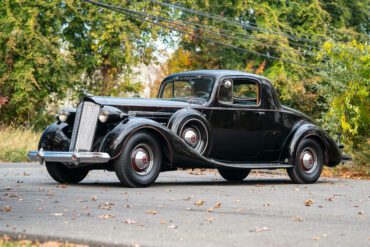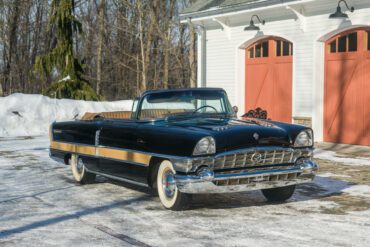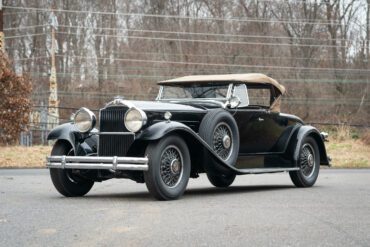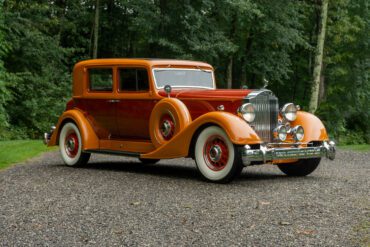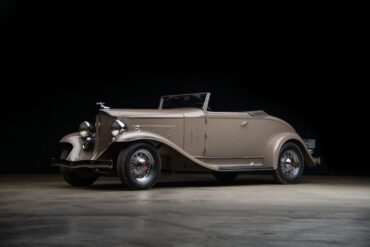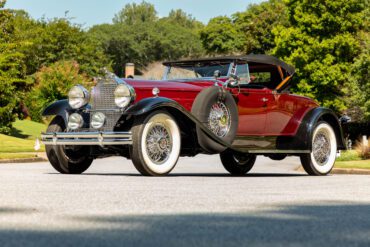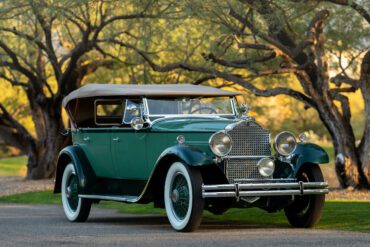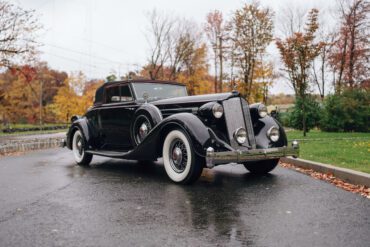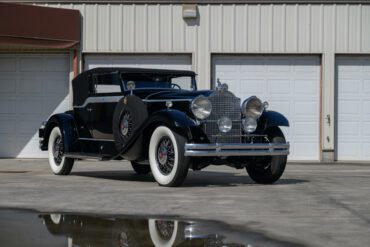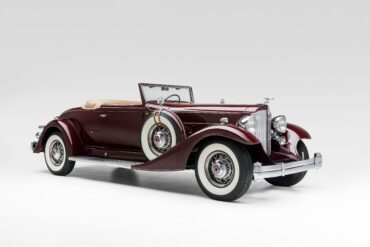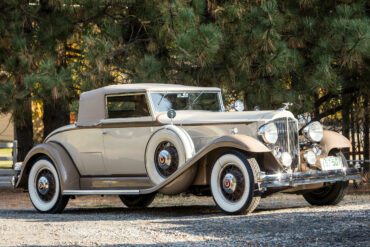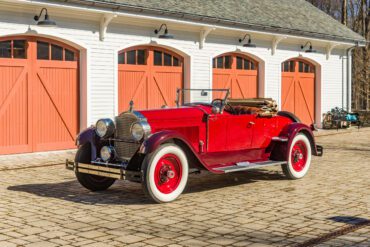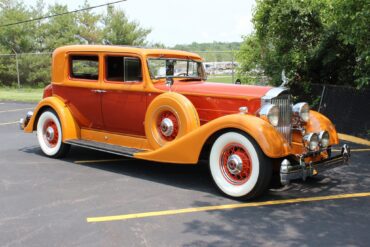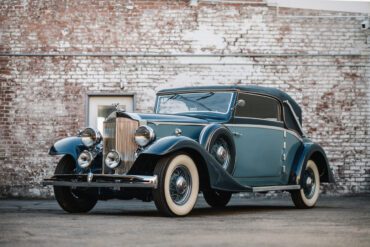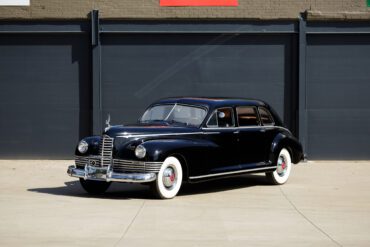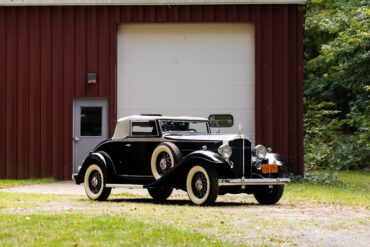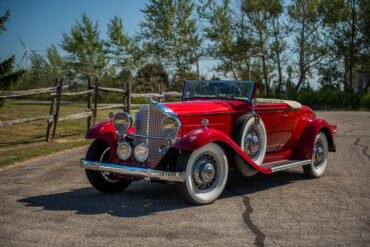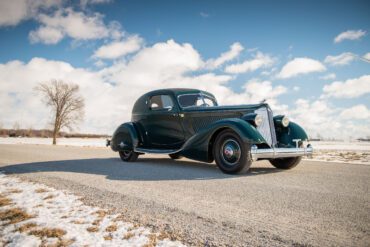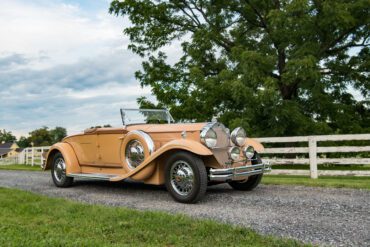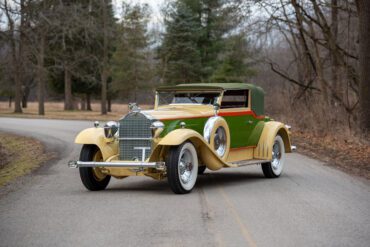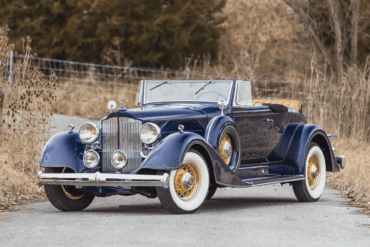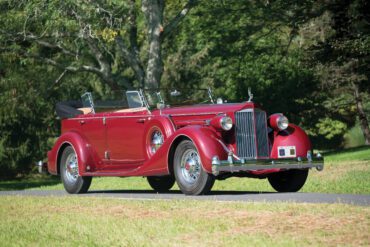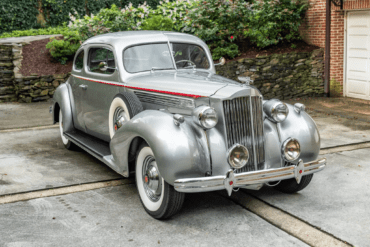By the mid-1930s, Packard had soared back to success. Overcoming earlier challenges, the production of Junior models had revived Packard’s...
All
- Packard 110
- Packard 120
- Packard 640
- Packard 745 Deluxe Eight
- Packard Balboa-X
- Packard Caribbean
- Packard Clipper
- Packard Custom Eight
- Packard Custom Super Clipper Eight
- Packard Custom Super Eight
- Packard DeLuxe Eight
- Packard Eight
- Packard Hawk
- Packard Light Eight
- Packard One-Twenty
- Packard Pacific
- Packard Panther Daytona Roadster Concept
- Packard Patrician
- Packard Predictor
- Packard Six
- Packard Special Speedster Concept
- Packard Standard Eight
- Packard Station
- Packard Super Eight
- Packard Twelve
- Packard Twin Six
Packard
Packard unveiled the Caribbean Convertible in 1953, a lavish sports model inspired by the ‘Pan American’ show cars of the...
In 1929, Packard made significant updates to its Sixth Series line, introducing a new 320ci engine for the Standard Eight,...
The Packard Eleventh Series V12 epitomizes the essence of American classic automobiles from the early 1930s. In a competitive landscape...
Following the Wall Street Crash of October 1929, the subsequent Depression years dealt a heavy blow to the American automobile...
In 1929, Packard revamped its Sixth Series by introducing a new 320ci engine for the Standard Eight, while reserving the...
The 1929 Packard 6th Series Eights, epitomizing the Classic Era’s allure, boasted captivating design elements. Characterized by elongated hoods, graceful...
Introduced in the 1924 series, Packard’s exceptional straight-eight engine heralded the dawn of a new era for both the revered...
Packard always danced to its own tune, embodying a spirit of fierce independence and unwavering determination. Many regard Packard vehicles...
Packard defied the norms of the auto industry, establishing its unique standards for both its vehicles and their presentation. Unlike...
In the late 1920s, Detroit found itself immersed in a phenomenon later termed the ‘Cylinder Wars,’ a concept that may...
During the Great Depression, the luxury car segment, serving the upper class, faced severe challenges in the automotive market. Intense...
In 1924, Packard introduced its first eight-cylinder car, the Single Eight, with four-wheel brakes. The nine-bearing sidevalve straight-eight engine produced...
Renowned for its unwavering commitment to quality, the Packard stood as an indisputable symbol of excellence among American automobiles in...
In 1940, Packard experienced a surge in sales, thanks to the success of its junior Packards in the product line....
The 1941 and 1942 models of the “Darrin” Packard stand out as some of the most sought-after and uncommon vehicles....
The 1934 Eleventh Series is widely regarded by many Packard enthusiasts as the pinnacle of the brand’s pre-war design achievements....
Presented here is the “Standard Eight” chassis with a 136-inch wheelbase, skillfully crafted by Hermann Graber, Switzerland’s renowned coachbuilder for...
Packard’s 1946 lineup, known as the 21st series, featured the Custom Super Clipper Eight Limousine as its most luxurious and...
Packard, renowned for its precision-built engines during World War II, returned to civilian automobile production in 1945. The 1946 Packards...
Packard unveiled its latest Tenth Series models in January 1933. As part of the lineup, the Standard Eight was succeeded...
Introduced in the mid-1934 for the Thirteenth Series cars, Packard launched the One Twenty as their foray into the mid-market...
In 1932, Packard’s Ninth Series line included the traditional Standard Eight, which was offered in two different wheelbases – 129.5...
During Packard’s golden era in 1934, the ultimate design statement was the scarce variations designed by Count Alexis de Sakhnoffsky...
Despite being marketed as a more economical option compared to the grander and pricier Packard models, the Packard Six was...
Packard’s 1931 Eighth Series Deluxe Eight chassis offered several “semi-custom” options in their catalog, and the LeBaron convertible coupe was...
The Convertible Victoria body style is an iconic example of the Classic Era, and Waterhouse of Webster, Massachusetts was a...
The 1934 Packards, also known as the Eleventh Series, are widely regarded as the pinnacle of the company’s pre-war endeavors,...
During the Classic Era, the dual-cowl phaeton was the most impressive body style, combining imposing size, magnificent proportions, and a...
For the 1938 model year, the Eight platform, previously known as the 120, underwent a redesign that incorporated all-steel construction,...


